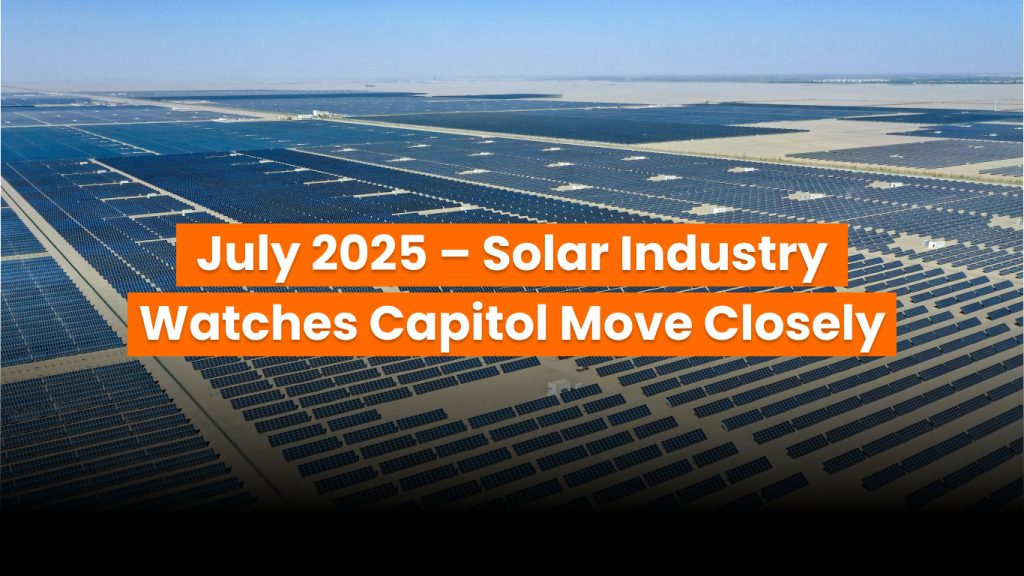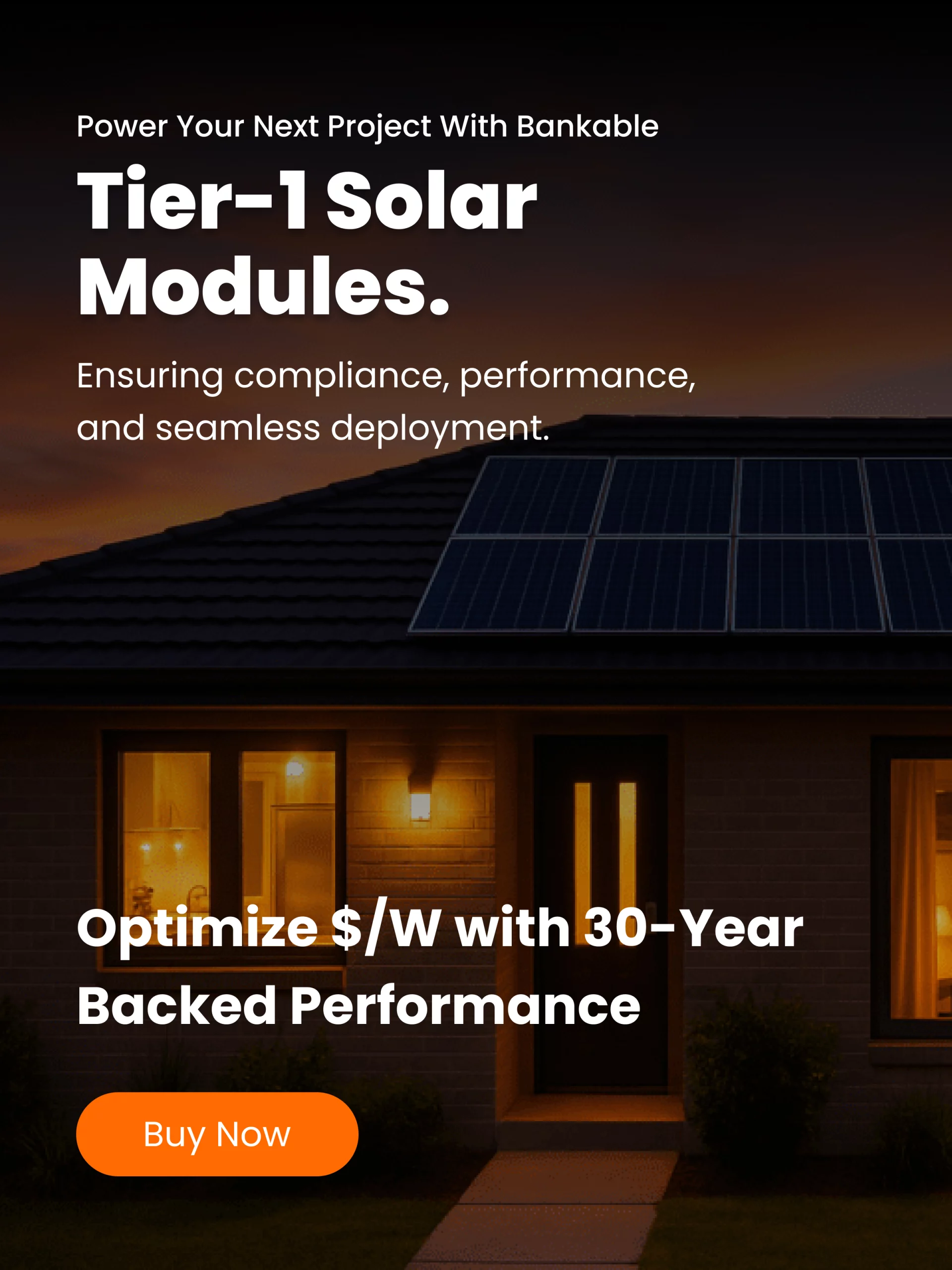As July begins, headlines emerging from Washington D.C. tell a dramatic tale: congressional action this month could reshape the future of America’s solar industry. Over the past weeks, major legislation, regulatory signals, and industry responses have put solar at the heart of a high-stakes political and economic debate.
Senate gears up for final vote
Members of the U.S. Senate are preparing to vote on the reconciliation or “One Big Beautiful Bill,” following its approval in the House on July 3. That bill enacts a major reduction of clean energy tax credits, despite vigorous opposition from Democrats and industry leaders. Solar Power World reports that the Senate’s version softens some timing restrictions for utility-scale solar and storage projects. It also removes a narrowly proposed excise tax on projects using certain foreign-made components. However, it still accelerates the phase-out of residential credits by the end of the year and imposes stricter construction deadlines for commercial systems. Critics argue that even with modifications, the core cuts remain unchanged.
Presidential executive directive reinforces rollback
On July 7, President Trump issued an executive order directing the Treasury and Interior departments to align with the new budget law. The order mandates enforcement of the credit phase-out for projects not under construction by the end of 2025, with final commissioning required by December 31, 2027. Reports indicate that any lingering IRA-era programs could be reviewed and amended to remove preferential treatment for renewables, reinforcing the legislative rollback.
Industry and markets brace for fallout
Industry analysts say the combined effect of legislative and executive decisions could disrupt hundreds of thousands of solar jobs, stall investment pipelines, and inject significant uncertainty into emerging energy markets.
Solar manufacturers and installers have spoken out. Solar Power World highlights that dozens of solar companies are pausing hiring or delaying expansion as they await final Senate action. The loss of residential incentive programs particularly worries small solar contractors, who rely heavily on the 30 percent residential Investment Tax Credit (ITC). Even key utility-scale projects face jeopardy under accelerated build deadlines.
GOP adjustments attempt balance
While critics insist the GOP-led rollback threatens clean energy progress, moderate Republicans have pushed for compromise amendments. Sens. Lisa Murkowski, Joni Ernst, and John Curtis reportedly pressured Senate leadership to revise parts of the bill. In response, recent revisions: removed an excise tax on foreign components, extended construction deadlines for commercial systems by one year, and eliminated new taxes on building materials. Still, many say these changes fall short of reversing the broader rollback.
Broader energy strategy unfolds
The budget package also shifts incentives toward nuclear, hydropower, hydrogen, and carbon capture—lifting subsidies for those resources while shrinking support for solar and storage. Advocates argue this benefits cleaner baseload technologies—but opponents say it leaves intermittent renewables vulnerable and drives up costs.
Tech infrastructure in jeopardy
Solar energy advocates warn that losing rooftop and distributed solar credits could undermine clean energy supply needed to power emerging AI data centers. Data center operators have already begun lobbying lawmakers, citing forecasts that reduce future renewable power could raise electricity prices by 8 percent or more and threaten grid stability.
What happens next
Senate debate is expected this week, with amendments still possible. House leaders will review the Senate’s changes upon return this month. Industry insiders anticipate this won’t be the last policy vote. At the same time, Solar Power World reports that industry groups are preparing a national advocacy campaign, aiming to secure at least partial restores of residential solar support—even in a scaled-back form.
State action fills the vacuum
Amid turmoil in Washington, solar programs continue to see intense activity at the state and local levels. Illinois launched its 2025‑26 Adjustable Block Program, offering 800 MW of capacity with equity-focused bonuses for community solar participation. EnergySage teamed with advocacy group Third Act to roll out a “Go Solar in 2025!” webinar series designed to support homeowners navigating incentives before federal rollback takes effect.
Major industry journals emphasize that even as federal policy shifts, utilities, developers, and state governments are forging ahead—from North Carolina installing solar-storage microgrids for disaster resilience to community solar projects in rural regions.
A pivotal moment – The Future of the Solar Industry
As the Senate moves toward a final vote, the solar industry stands at a crossroads. Are the amendments enough to preserve growth? Will the executive order stabilize policy or signal deeper opposition? How fast will state-level and private initiatives make up ground? With solar employment, investment, and innovation hanging in the balance, July 2025 could define a new chapter in the nation’s energy story.




